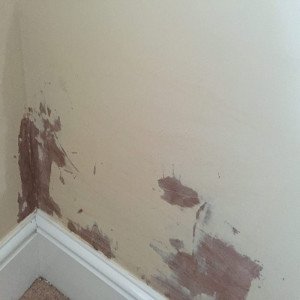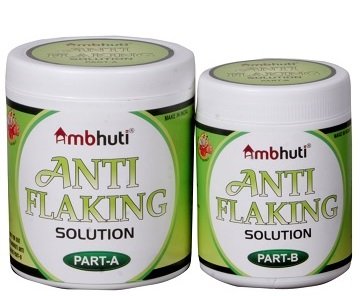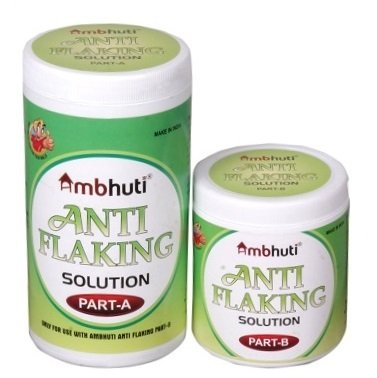Anti-Flaking
Dilaye sealan se chutti, Roke Paint ko banne se papri

Anti-flaking provides lamination to cement walls and prevents flaking of paints. It comes in two parts A and B which are mixed in 2:1 ratio before application. Anti-Flaking is used directly on the cement walls to provide strength to it and avoid flaking of paints. Anti-flaking serves both the purpose of lamination and finished base hence reducing the cost of wall putty application. Note : It is very important to understand that damp resistance means resistance to water in humid air and not physical water contact/ leakage
- Note : It is very important to understand that damp resistance means resistance to water in humid air and not physical water contact/ leakages.
- Buy Now Review
Anti-Flaking related videos
Here are the general problems we face
in our home or office area


Damp



Types of Dampness/Sealan
| Damp Type | Effects |
|---|---|
| Condensation - Damp From The Air | Often shows up as black patches of mildew. Wallpaper may come loose from the wall. Soft furnishings and clothes may smell musty. Visible droplets of water may be seen on affected surfaces Can be harmful to human health. Can occur inside walls and insulation or under floors. Very common in modern houses and houses that have had standardised energy efficiency upgrades. |
| Rising Damp - Damp from the ground directly below the house. | Usually only affects ground floor rooms and floors of basements. Skirting boards and timber floors may rot. Plaster may 'bubble' along a horizontal line or form a powdery band. Solid floors may develop a white bloom or get fine white crystals forming. Wallpaper can develop a brown 'tide mark. Harmless to human health. Very common in houses that have had their original ground floors changed to concrete, otherwise rare. |
| Penetrating Damp - Damp from rain, or damp from ground against walls | Patches are often outlined with a brown stain. Plaster can 'bubble' and get a powdery surface. Can affect ceilings and walls. Was often deliberately designed into old cellars to create a cold store and stop rising damp affecting the rooms above. Harmless to human health. Very common at ground floor level, where it is generally misdiagnosed as rising damp. Also common in houses with cement rendered walls or cavity wall insulation. |
| Chemical Damp - Damp from salt contamination | Usually shows up as patches of brown staining. Intensity of patches can vary with weather conditions. Patches gradually grow in size and intensity over a period of months or years. Can appear on any plastered surface. Harmless to human health. Very common on chimney breasts. |
| Damp from plumbing leaks | Typically shows up as a small isolated damp patch, without any brown staining, that gradually grows. Plaster can 'bubble' at the edges of the patches. Water can appear if the leak is near (or above) the surface. Very common in houses with heating pipes buried in solid floors. |
| Damp from walls and floors drying out | Typically shows up as patches, without any brown staining, that may initially grow before gradually shrinking over a period of months. Harmless to human health. Common after a period of building work, flooding, or a long term plumbing leak, if hot air driers have been used to speed up the drying. Damp patches can appear on surfaces that were not affected by the building work or flooding but are near by. |
Uses of Ambhuti Anti-Flaking

Before Application
-
Used to stop flaking of paints from walls
- Walls usually shows sign of dampness due to various reason.
- like deposition of salts, water leakage, moisture etc which results in the flaking of paint and putty after few months.
- This leads to extra burden of painting walls periodically.

After Application
This is a high strength material used to provide fine lamination to the cemented walls. It helps the walls to gain more strength and also provides the ideal base for paints. Paints when applied on Ambhuti Antiflaking do not flake for years.
Outstanding Properties of Anti-Flaking
- Ambhuti Anti-Flaking are water proof
- Ambhuti Anti-Flaking are stress proof
- Resistant to most chemical non corrosive & non toxic
- Great strength & toughness
- Outstanding electrical insulating properties
Application Method of Anti-Flaking
- First, clean the surface where you need to apply the paste properly with the wire brush until you have a solid cement base for application of the product.
- If surface is not plain then repair it by cement so that you get the smooth surface for application of the Antiflaking.
- Ensure that the wall is not wet before application of product
- Mix Part A n B in 2:1 ratio for 2-3 min so that both parts are mixed well
- Apply only 1 coat of the paste on the damaged area. Kindly ensure the applied layer is finished and smooth.
- Allow it to dry for at least 24 hours of application and then apply paint.


